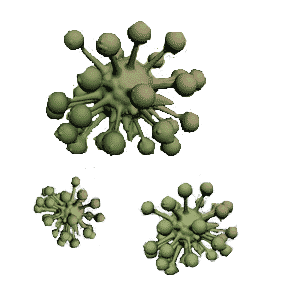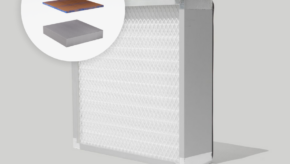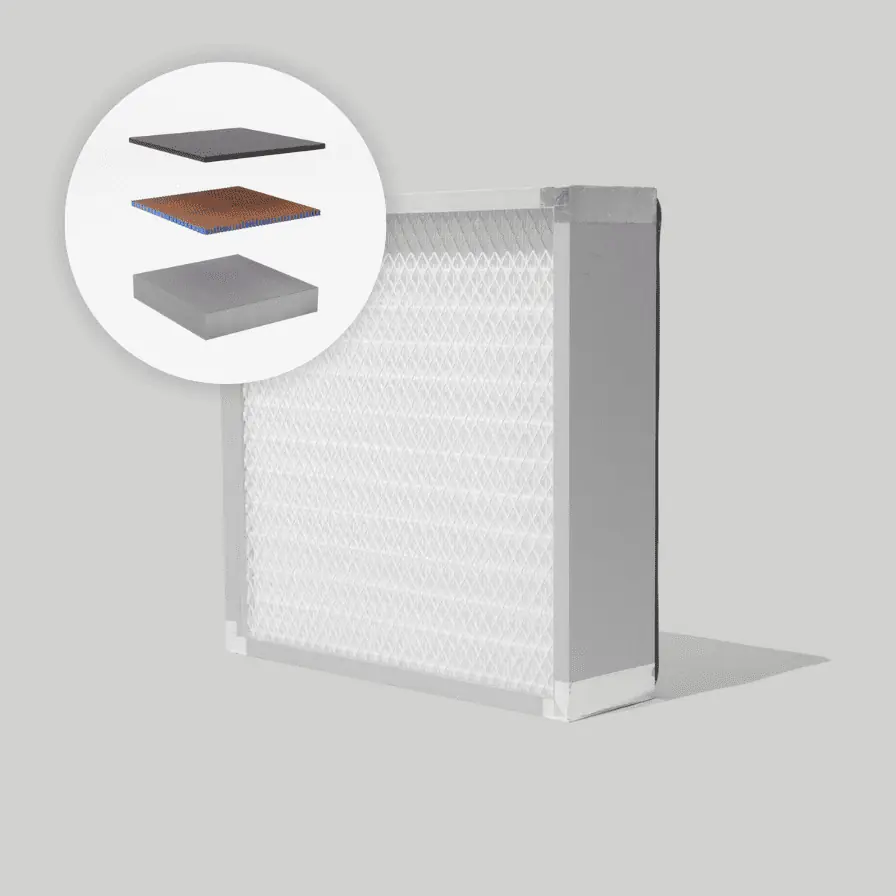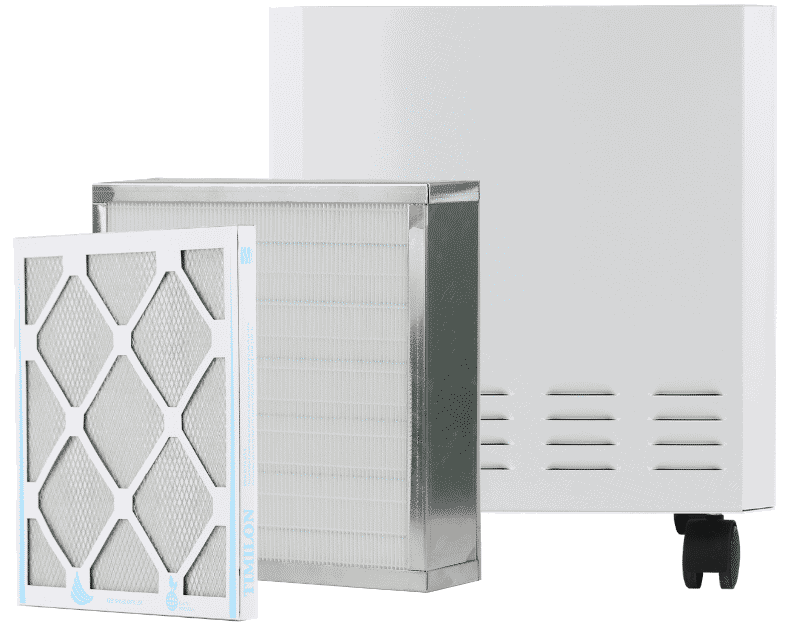The archaic assumption that outdoor air, in comparison to indoor air, is far more contaminated and polluted is an assumption that has been shattered with proven data and statistics gathered from extensive testing. This troubling fact that indoor air quality is often times more heavily polluted than that of outdoor air is a very alarming statistic that should not be taken lightly and flippantly. The significant amount of time that is spent inside, according to the EPA the average American spends about 90% of their time indoors, is cause for worry when considering the severity of indoor air quality contaminants inside the environment. If you suspect that air pollution is a persisting problem inside your home, an instinctual reaction is to utilize air quality testing measures to identify the level of contaminants present throughout the area. Indoor air quality testing is not only a valuable resource but also an essential item to be able to utilize if and when you become concerned about IAQ (Indoor Air Quality) levels. Pollutant levels from single sources are not likely to pose a risk to your IAQ, but when these single sources are combined with multiple sources in a single environment such as a home or office building, concern will develop for the state of the Indoor Air Quality. Depending on the situation present inside your indoor environment, the time of year – air pollution skyrockets in the winter months, and the different levels of pollutants present within the air you will need to be selective when determining the correct indoor air quality test to purchase and conduct on the air.
What is Indoor Air Quality Testing
In preparation of purchasing or conducting an air quality test on/for your indoor environment, it is best to understand what an air quality test is, what it does, and what sort of air contaminant it tests against. Indoor air quality test kits are used to test a variety of common indoor contaminant threats found in your air quality. Before you purchase an air quality test, select the indoor air quality testing that covers and tests for all possible contaminants or if you know of a contaminant that is a current issue in your home, purchase a test that is effective at detecting the contaminant in question. The common contaminants that air quality tests are able to cover include the following:
- Carbon Dioxide
- Carbon Monoxide
- Nitrogen Dioxide
- Mold, Bacteria, & Yeast
- Radon
- Allergens – dust mites, pet dander, cockroaches, etc.
- Hydrothermal – humidity.
- Aerobiology – fungus, dead skin cells, etc.
- Precipitated Particulates: – pollen, dust, etc.
- Formaldehyde & Aldehydes
Testing for Common Indoor Contaminants
The ability to test for all indoor pollutants in one sweep is, unfortunately, an unrealistic option. Therefore, understanding the difference between the various types of air quality tests and the contaminants that they are able to detect is critical for anyone to digest before they start purchasing IAQ tests for their home or personal indoor environment. When it comes to the different categories of indoor contaminants that are potentially present within your home’s air, the three main groups labeled by the EPA include the following:
- Biological Pollutants – Mold, pollen, dust mites, bacteria, and even dander.
- Chemical Pollutants – Volatile organic compounds (VOCs) that include formaldehyde, lead and other chemical pollutants.
- Combustion Pollutants – Carbon monoxide, tobacco smoke, etc.
Indoor Biological Pollutants
Biological pollutants are any substances in our environment which comes from a living organism, and the substance has the potential to afflict negative affects to human health upon exposure. A biological contaminant includes bacteria, viruses, animal dander, house dust, dust mites, cockroaches, and pollen. When these pollutants contaminate your indoor air and travel throughout the environment it can spike allergic reactions and can even lead to potential infectious illnesses such as influenza, measles, and chicken pox. If you detect that biological pollutants are flooding your home or personal indoor environments air quality, it will be valuable to conduct an indoor air quality testing to gather data on the exact level of biological contaminants present in the air.
Testing for Indoor Biological Pollutants
Biological pollutants are extremely difficult contaminants to test for within the air. Ultimately, there is no simple or cheap method to gather a sample of the air inside your personal indoor environment, in the hopes to determine the level of all biological pollutants within the confined space. Some experts have suggested that sampling for biological pollutants is not a useful tool, because even if you had your home tested for these types of pollutants, it is almost impossible to identify which biological pollutant(s) are causing the various symptoms and health issues an individual may be experiencing. Although performing an IAQ test inside your home may not be the most ideal, there are other measures you can take to try to detect a build-up or accumulation of biological pollutants in your indoor environment. Touring your home and following your nose and your eyes can help you to identify traces of these pollutants. There are two major factors that help to create conditions for biological contaminants to grow and cultivate in the environment, these two factors include the following:

- Dust
- Construction materials
These items such as wood, wallboard, insulation, and dust all contain nutrients that allow biological pollutants to thrive. If you acknowledge an extensive presence of these items that biological pollutants may be a concern in your home.
Indoor Air Quality Testing for Combustion Pollutants
Combustion pollutants are sometimes referred to as combustion by-products because they are produced by the burning of all fossil fuels. The pollutants are gases or particles that come from burning fuels such as natural or LP gas, wood, oil, kerosene, and coal. The burning of tobacco will also produce combustion pollutants into the air. The most common types of combustion pollutants that are of the most concern to your home are the following:
- Carbon Monoxide – a colorless, dangerous gas that can be lethal.
- Nitrogen Dioxide – a gas that can lead to damage within the respiratory tract.
- Sulfur Dioxide – a gas that will irritate the eyes, nose, and respiratory tract.
- Particulates – small, minuscule particles that make up smoke and lead to irritation in the eyes, nose, and throat.
When combustion pollutants are floating within the air you breathe, the potentially hazardous health effects that can become elicited from these pollutants can be possibly severe. Those individuals with allergies, asthma, or chronic respiratory / heart problems are particularly susceptible to health effects from these pollutants. The health effects from exposure can range from mild to lethal with the symptoms as follows:
- Headaches
- Dizziness
- Sleepiness
- Irritated eyes
- Breathing problems
- Respiratory problems
IAQ Examination for Combustion Pollutants
Testing for levels of combustion pollutants inside your personal indoor environment can be accomplished through indoor air quality testing or meters that are placed within the environment and identify/detect the presence and levels of specific contaminants including that of combustion (CO2). These IAQ testing measures are available in a variety of different models and brands, each being able to test against specific pollutants that are commonly found in the indoor air. Another form of testing that can be considered when dealing with combustion pollutants includes the installation of a carbon monoxide alarm – one with an audible alarm to alert those within the environment of a dangerous level of combustion pollutants in the air. The function of these CO alarms is to alert people when dangerous, high levels of carbon monoxide are present in the environment, and therefore will give you time to vacate or ventilate the home. However, depending on the type of CO alarm you utilize, some are only able to detect high amounts of CO, rather than low amounts that can be potentially hazardous to your health as well.
Indoor Chemical Pollutants
Chemical pollutants, or Volatile Organic Compounds (VOCs) are gases that are emitted from certain solids or liquids into the environment, leaving the indoor air quality compromised and contaminated. Organic chemicals are a widely used and detectable pollutant in indoor environments, as it is commonly used in a wide variety of household products – including paints, varnishes, wax, cleaning solvents, disinfectants, cosmetics, and aerosol sprays. These products will release organic compounds while you are using them, and to some degree, when they are even dormantly stored within your home. Concentrations of VOCs are consistently higher indoors, almost up to ten times higher, than outdoors. When these high concentrations are present in the indoor air we breathe, it can spark and elicit a bout of adverse health reactions and symptoms. The key signs or symptoms associated with VOCs and chemical pollutant exposure includes the following:
- Nose and throat discomfort
- Headache
- Allergic skin reaction
- Nausea
- Dyspnea
- Conjunctival irritation
- Fatigue
- Dizziness
IAQ Testing for Chemical Pollutants
The existence and growing levels of chemical pollutants inside personal indoor environments has created new and inventive air quality testing technology to detect these potentially harmful chemical pollutants and analyze the levels in which they are present inside this indoor space. Air quality monitors are able to be placed inside the potentially contaminated environment and be utilized to detect the various pollutants found within the air. Indoor air quality monitors such as Foobot, are devices that track harmful pollutants in real-time and over time, it will detect VOCs, PM2.5, and also CO2 (derived from VOC), Temperature, and Humidity. These indoor air quality testings for VOCs collect and gather data from your indoor air quality test and translate it onto a personalized app that gives real-time information on your personal indoor environment’s air.
Cost for Indoor Air Test
When it comes to testing the pollutant levels present within your indoor air, and the overall indoor air quality inside your living space the cost of indoor air quality test can vary significantly depending on several different factors. A professional indoor air quality test will usually run about on average $400, however, the typical amount for an IAQ test falls between $250 and $550. The price of an indoor air quality test can depend on both the size of the house and the extent of your analysis. The more extensive your testing is – the more pollutants that you request testing for – the more expensive it will run. A whole-home service might include sampling for, or detecting of mold and bacteria, VOCs, allergens, asbestos, radon, and combustive elements. A far superior and effective solution to tracking and testing your home’s indoor air quality, as opposed to the lengthy and expensive method of indoor air quality sampling tests, is through the use of air quality monitor devices. These devices are able to monitor the indoor air quality levels by keeping track of the air around you, measuring the temperature, humidity, carbon dioxide, toxic chemicals (VOCs), and harmful particulates (PM2.5). This is all done in real-time and available for you to monitor within seconds from your phone via an app – and the cost of these devices is a fraction of what it would be for air quality sampling tests inside your home (air quality monitoring devices range from $100 to $300).
How to Control Pollutant Sources Before You Test Indoor Air Quality
If you would like to finally get down to the root cause or source of the pollutant issues inside your home, you will need to take and apply these few tips that were proposed by the EPA (Environmental Protection Agency). These tips for controlling pollutant sources inside your home includes the following:
- Identifying and Controlling the Source of the Pollution – Whether the pollution is from chemical, biological, or combustion pollutants, usually the best way to improve the quality of your indoor air is to get rid of or even reduce the individual sources of pollution. Different sources of pollution inside your personal indoor environment can be from building materials, cleaning products, furniture, flooring, and even from stoves or fireplaces. Once you identify the source of the pollution, be vigilant in eliminating the use of this source or even removing it entirely from your indoor living space.
- Ventilate the Indoor Environment – Over time the air inside a confined space will become flooded and completely inundated with pollutants, particularly when ventilation is poor in this area. If you are aware that your indoor space lacks the ideal or proper ventilation, it is important to flush out this contaminated air with fresh outdoor air. This is done through opening the windows and doors, running your air conditioner with the vent control open, and using exhaust fans.
- Regularly Change Filters – Air handling and HVAC systems utilize filters to help trap dust and other pollutants in the air that pass through the filter. It is important to stay regular in changing these filters often, as it becomes full it does a less than adequate job of trapping pollutants and in turn leaves your air more contaminated with pollutants.
- Adjusting Humidity Levels – The amount of humidity present in the environment can affect the concentrations of some indoor air pollutants within the air. If humidity is high, it will keep the air moist and increase the likelihood of mold and other airborne pollutants. It is suggested to keep indoor humidity between 30 and 50 percent.









